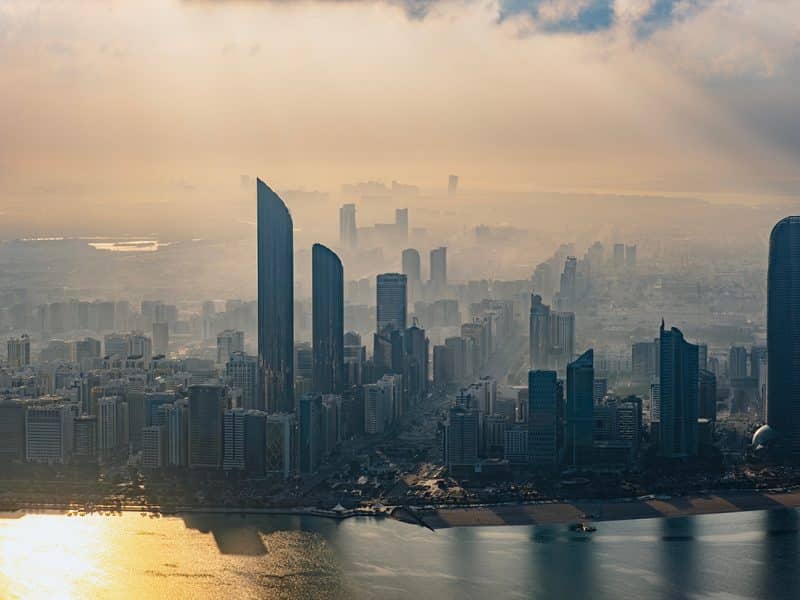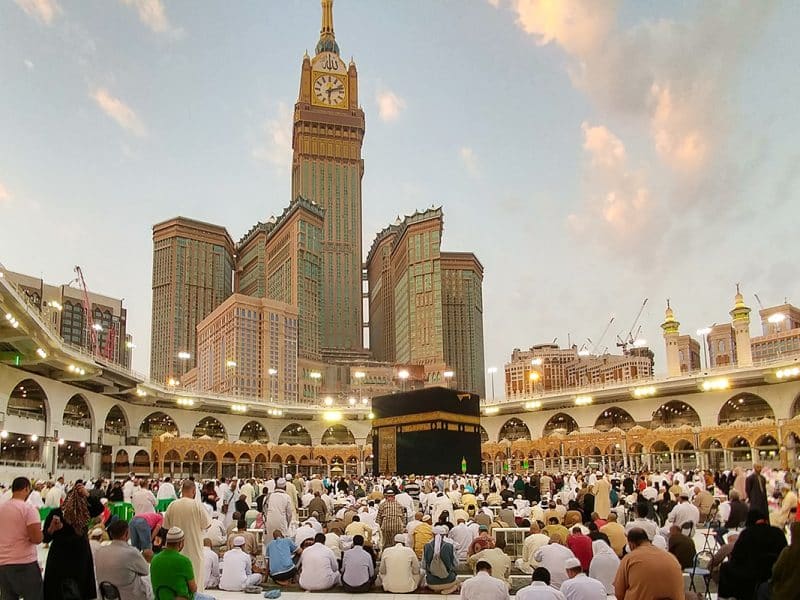Over the past decade, sustainability has become one of the most pressing global issues. As the effects of climate change intensify, corporations, governments and individuals are feeling the pressure to adopt greener practices.
But some have argued that sustainable living remains unattainable for most due to the high cost associated with sustainable practices and products.
One factor that perhaps stands out the most in the business world in this day and age is going green – and the high costs that can be incurred in the process.
Going green costs more initially
While initial investments in sustainability can be costly for businesses, these upfront expenses are often outweighed by long-term savings and profits, said Paul Turner, Executive Director of Capex.com Middle East.
“Eco-friendly practices lead to significant returns and higher profitability” through energy efficiency and revenue from sustainability-minded customers, he told Arabian Business.
“Consumer trends show a growing preference for sustainable companies, suggesting that going green can boost sales and customer loyalty,” he added.
However, incentives from governments, as has been the case in the UAE, can help offset startup costs.
Om Puniyani, Chief Marketing Officer at EIGHTClouds Private Equity concurs that sustainability benefits all firms, “regardless of economic background or industry.” Minor operational changes can help companies follow greener processes and garner goodwill from stakeholders, he said, adding that most innovative brands are integrating sustainability into long-term roadmaps. While upfront sustainability investments carry short-term expenses, embracing eco-friendly practices offers various long-term advantages in reduced costs, risk mitigation, and competitive differentation that boost profitability.

Shifting consumer dynamics
There is a common belief that sustainable products are more expensive than conventional ones. A study by consulting firm Kearney found that green products are between 75 to 85 percent more expensive. However, it noted that consumers are willing to pay a premium for these products if they know what sustainable practices were involved in the production process.
When it comes to consumer behaviour, Turner disputes claims that sustainable practices are a luxury only afforded to the wealthy.
“Sustainable practices in consumer behaviour are not confined to the wealthy.”
While higher-income individuals may have greater access to eco-friendly options, sustainability is “achievable across all economic spectrums,” he said, even with limited budgets through avenues like second-hand shopping.
Om Puniyani has also witnessed a notable shift, saying that today’s consumers, especially youth, strongly associate with purpose-driven brands upholding sustainability. As societal awareness grows, embedding sustainability in branding will enhance experiences and acceptance, he explained.
As consumers increasingly demand greener products and operations, brands must respond to gain a competitive edge. Those visibly implementing sustainable best practices experience better market traction and loyalty from consumers passionate about reducing environmental impact, explains Turner.
“An increasing number of SMEs have adopted a green stance for two key reasons: a strategic alignment with consumer trends and a genuine commitment to ethical trading,” said Puniyani.
“With COP28, the leaders of the UAE and wider region have played a pivotal role in expediting climate change and sustainable best practices at the forefront of operations across industries, and it is essential to recognise that this narrative has been in development for quite some time. COP28 underscored a collective commitment among brands, irrespective of their category, to prominently incorporate sustainability in their campaigns, resulting in a tangible brand differentiator for major industry players.”

By October 2023, 131 businesses pledged to adopt sustainable practices at the annual Retail Summit in Dubai, ahead of COP28 which took place the following month.
And in the fashion industry, the likes of Stella McCartney, Patagonia, Gucci and Burberry are leading the charge by embracing more ethical and sustainable practices.
The affordability issue with sustainable real estate
“Sustainable real estate in Dubai often targets affluent buyers, with luxury properties that include villas and hotels that incorporate green practices and norms,” said Turner.
However, government initiatives are currently underway to make greener living more inclusive across the emirate and its different income brackets.
“While property owners can be incentivised to adopt sustainable practices by offering long-term benefits like lower energy costs and increased resilience, high prices also risk making sustainable living seem exclusive to the wealthy,” he added.
Such a trend could risk excluding lower income communities which could reduce the adoption of sustainable practices. “It is important to make sustainable living more accessible through incentives for developers, promoting the use of innovative construction techniques and offering diverse property options,” Turner added.
Swapnil Pillai, Associate Director of Research at real estate firm Savills Middle East, agrees with this sentiment. He believes that embracing sustainability will unlock long-term value for residents, investors and communities through cost savings, resilience and natural beautification.
“There is mounting concern from investors, banks, sustainability experts, and policymakers globally regarding the rate at which properties of all sectors are moving towards becoming more environmentally sustainable. With various Paris-proof targets and building performance standards tracking those that meet the goals, it is clear that we are behind with the number of assets that remain below the required criteria stubbornly high,” Pillai told Arabian Business.
“There is currently a dearth of green-certified buildings,” he noted. Of the total office stock across Dubai, only 22 percent have a LEED certification, highlighting another challenge for the market wherein the region “largely relies on international certifications despite [its] unique environmental challenges.”

Green-certified buildings have become increasingly popular in major commercial districts in Dubai and Abu Dhabi in recent years. However, occupiers have not necessarily chosen these developments primarily for their sustainability features. As demand remains strong even without green certifications, landlords have little financial incentive to retrofit existing buildings.
Several international studies have found that making homes more sustainable often requires an upfront investment that many homeowners cannot afford.
In Dubai, green homes can cost more than conventional properties due to premium sustainable materials. However, their popularity is rising along with environmental awareness. Government actions to promote greener construction have supported growth. Energy efficiency and lower long-term costs make green properties an attractive investment or purchase for sustainability-minded consumers. As demand rises, green home values and rental returns have increased, enticing developers and investors.
But contrary to assumptions, energy-efficient renovations using salvaged materials need not be significantly more costly than traditional builds. In some cases, a sustainable renovation may even save money in the long run versus a standard property.
“Sustainability has moved up the agenda for an increasing number of residential developers in the region. Projects such as the Sustainability City in Dubai have been successful and popular among occupiers. The project in Dubai is close to fully occupied, with new schemes currently under development across the emirates of Sharjah and Abu Dhabi as well as neighbouring Oman.
“The success of the [Dubai] project is an example of building commercially viable projects that are greener and cost less to operate and maintain.”
Louise Clarke, Head of Sustainability at Berkeley Group, applies sustainability uniformly across housing types to cultivate strong, thriving communities.
“We transform challenging and complex brownfield sites into welcoming and sustainable places, with homes and amenities for all. By reviving neglected and underused land, we can return it to community use and create neighbourhoods that have social, environmental and commercial value,” she said.

And like the promise of long-term benefits for businesses that are choosing to go green, sustainable real estate also holds value in the long-run. “[It] extends beyond protecting the environment,” said Clarke.
“Embracing sustainability can have numerous advantages for residents, investors, and other stakeholders. Developing buildings that meet and go beyond industry standards for sustainability can lower operational costs, as those properties are designed to consume resources more efficiently, from heating, electricity and water use.”
Embracing sustainability carries both obligations and opportunities. Though initial investments are often sizable, green practices pay profitable long-term dividends for forward-looking private and public stakeholders.
As awareness rises, sustainability has transformed from a luxury to a necessity for responsible future-proofed development. With collaborative effort, businesses and consumers alike can adopt sustainability affordably to pave the way for inclusive prosperity.










